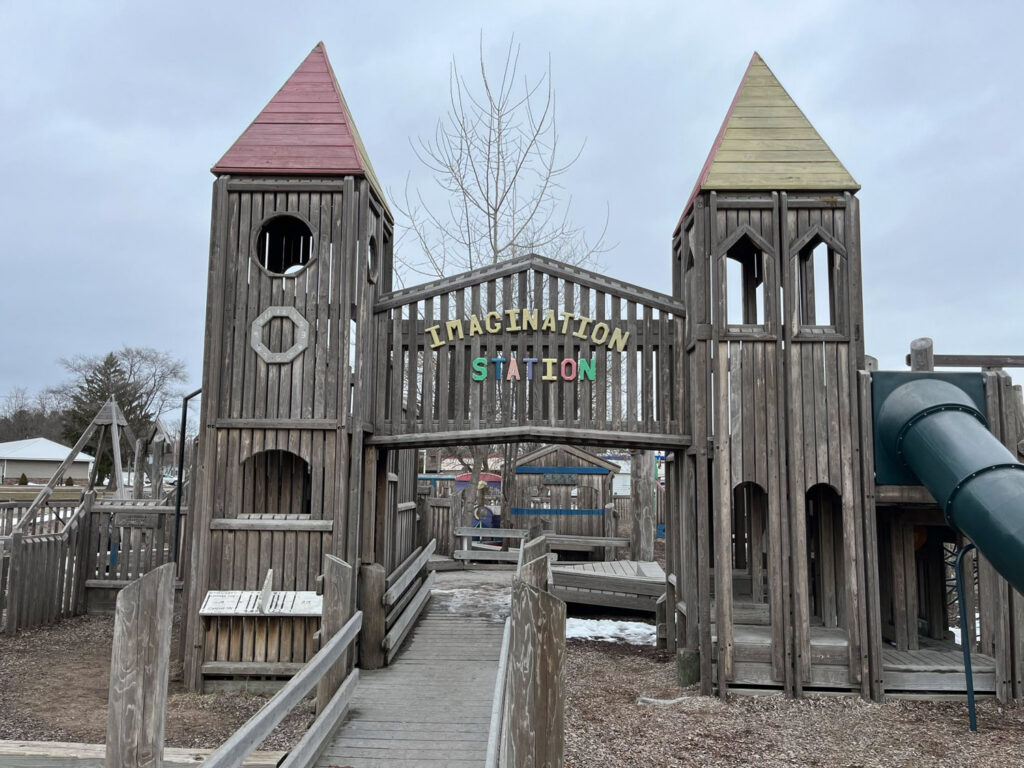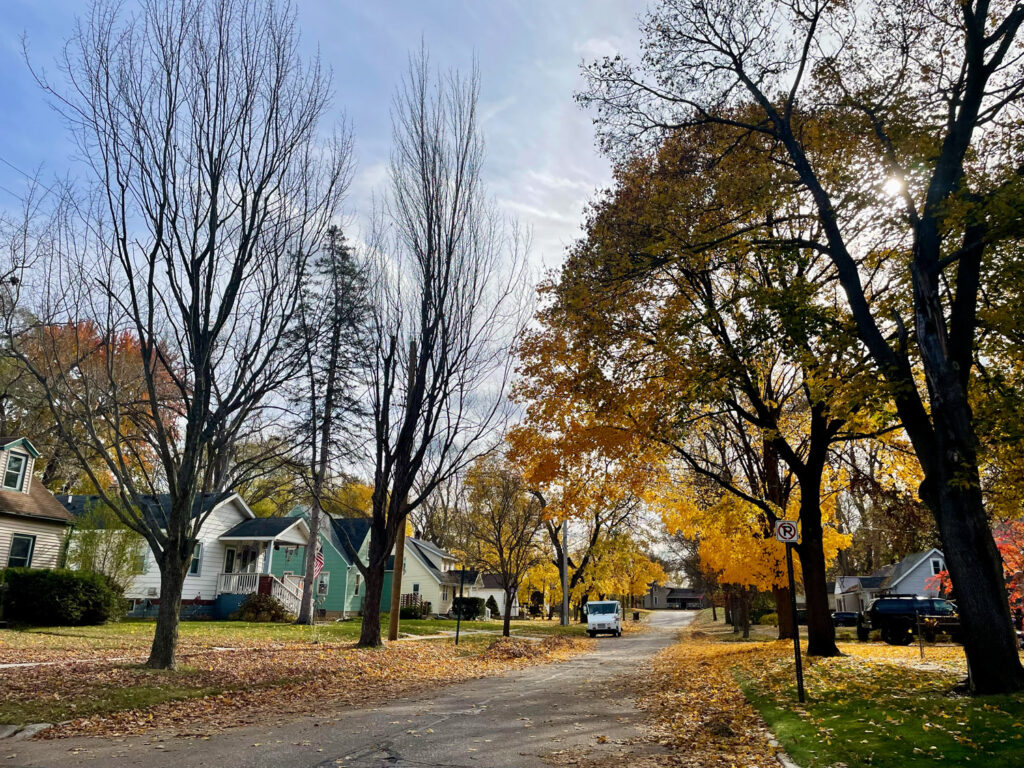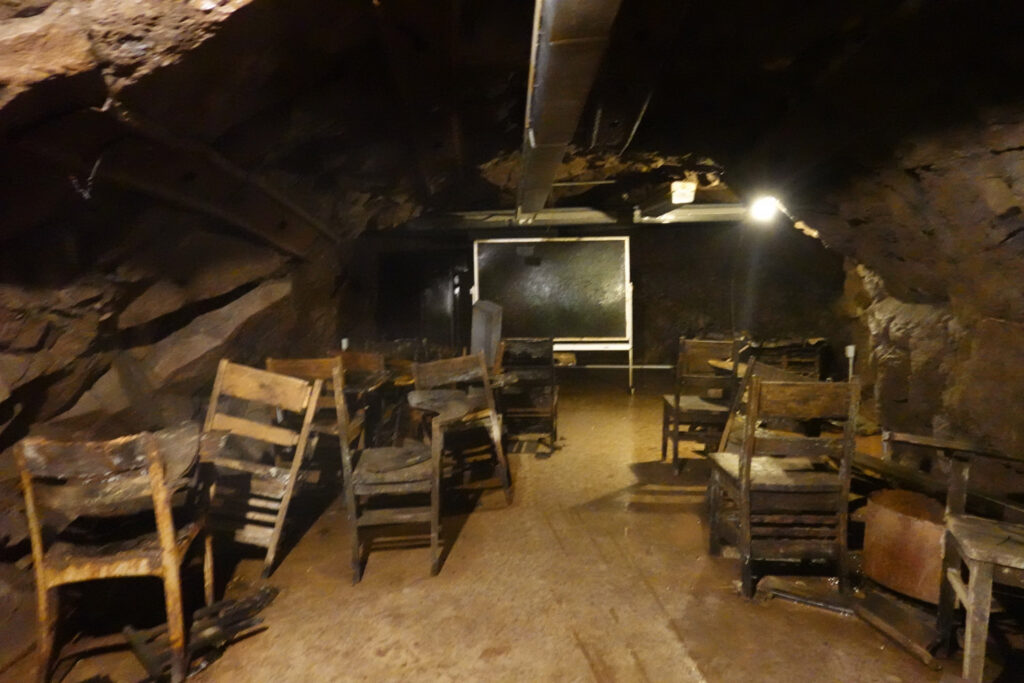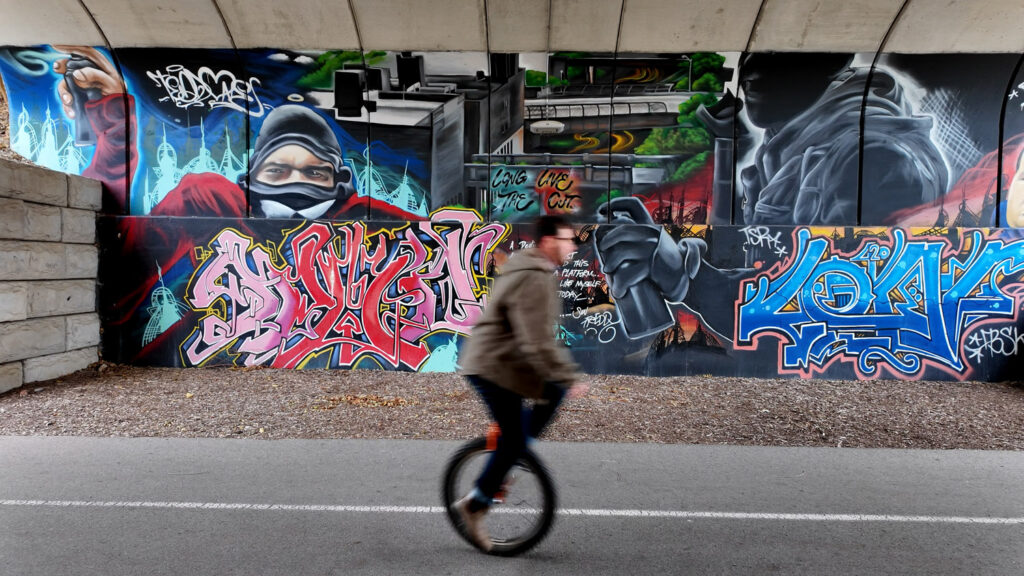Kalkaska — For the ‘90s kid, there was perhaps no announcement more exciting than learning your town was getting a big wooden playground.
Growing up, the nearby small-town of Hart got one. It was nautical-themed and called “Pirates Paradise.” It was so cool.
Many a Michigander still remembers the thrill of running up to one of those epic wooden cities. The towers, the turrets, the bridges.
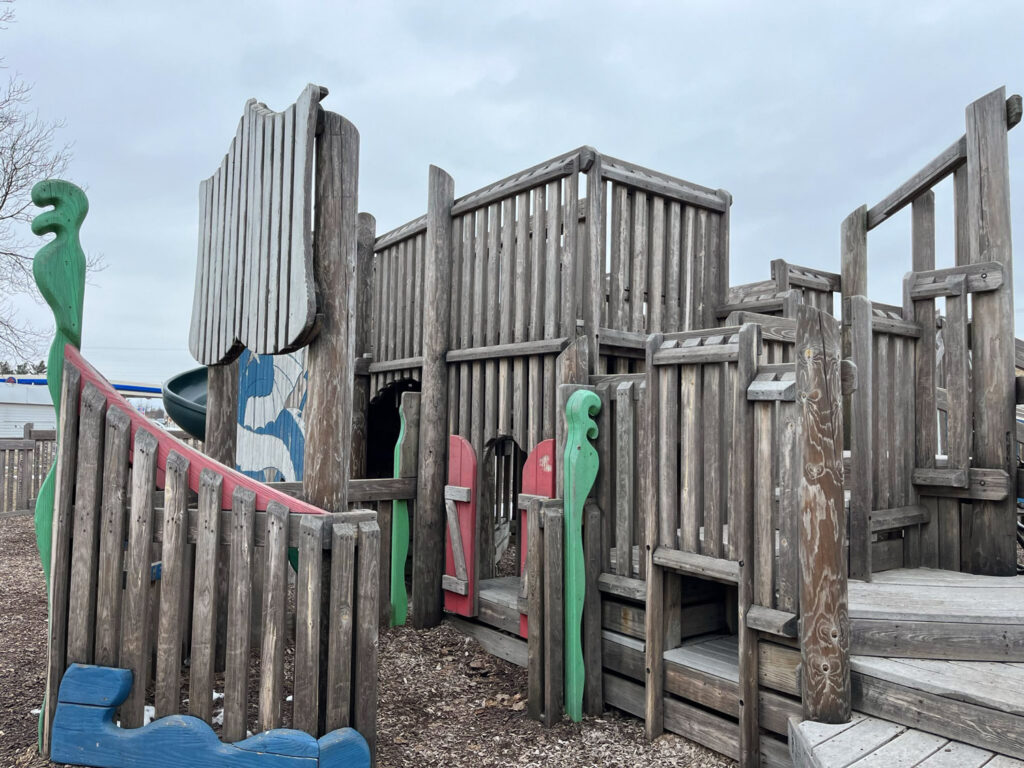
“You could go from one side to the other without ever touching the ground,” one Redditor pines.
The question is: Where did they go?
Most of the playscapes were built by a construction company called Leathers & Associates out of Ithaca, New York. They sold a package deal: You had kids in your town think up and design the main features, the company provided the plans, and if you could gather enough volunteers in your area, the community would come together to build it. It was a tight little enterprise that connected good people and created awesome playgrounds for kids.

In Northern Michigan, Kalkaska has one of the few remaining wooden playgrounds in Chalker Park. As soon as my kids got out of the car, they sprinted to investigate. I follow close behind and felt the same curiosity: What’s in there? What’s behind that thing? Where does that passage go?
This is the first reason we no longer see these playgrounds anymore: Parents fear not being able to see their kids at all times. Once they climb those stairs and round that bend, they’re gone. There are some passageways adults can’t even get into.
But then again, that’s kind of the point. As a kid, you want to get lost. You want to get away from your mom’s constant supervision.

Splinters, carpenter bees, and broken arms are a few other reasons for their extinction. Not to mention concerns about the chemicals used to treat the wood. Sadly, Hart’s “Pirates Paradise” fell to arson.
Ultimately, wooden playgrounds were no longer deemed safe. They have been slowly dismantled and replaced, but not by cooler updated wooden playgrounds. In their place now stand sparse, obnoxiously colored metal and plastic playscapes.
As a parent of small kids and thus a playground connoisseur, I can confidently say the new ones are way more boring. A wiggly plastic circle. A zig-zaggy metal pole. A big tic-tac-toe game. And, of course, a height chart. Ah yes, every child’s classic playground game: How tall am I compared to my peers?
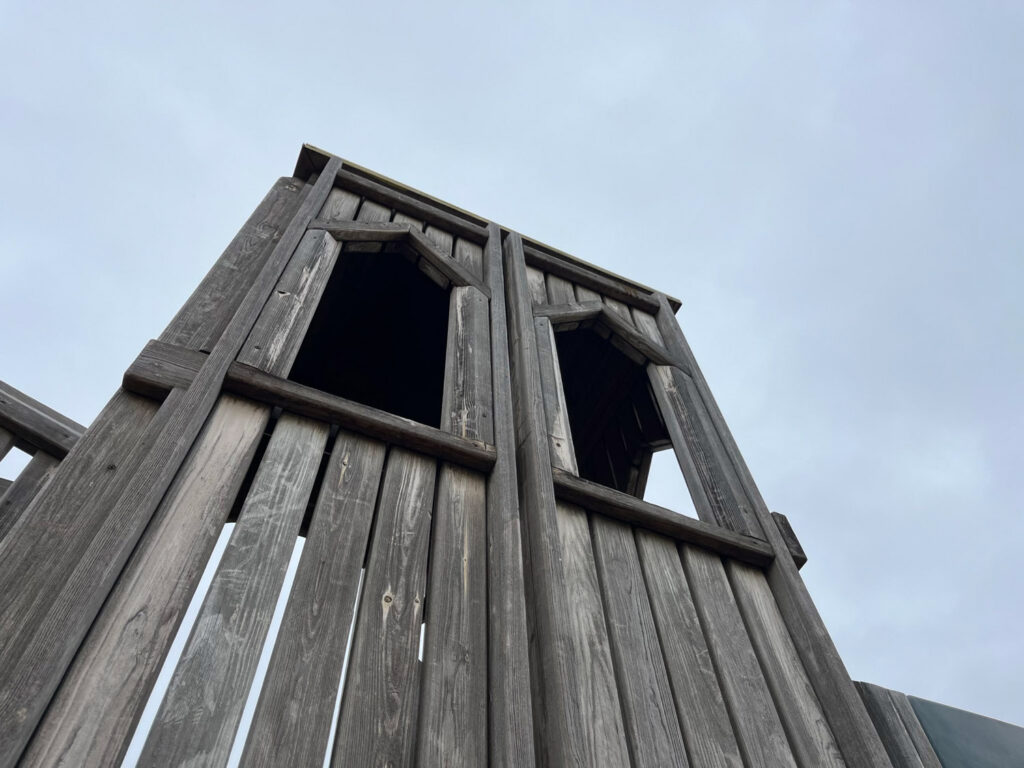
Kids want to dash up high towers and survey the land, chase each other across rope bridges, and nestle into cozy quarters to tell secrets. They want to jump from high places and seek out hidden passageways.
And all of this is good. Adventurous, semi-risky playgrounds are not only what kids want, they’re beneficial to childhood development.
In Germany, they’re actually trying to make playgrounds riskier. German insurance companies are demanding it. They say childhood is when we humans learn to assess risk and navigate our physical surroundings, and, “ironically, ’safety’ culture is stunting kids’ risk assessing abilities…”
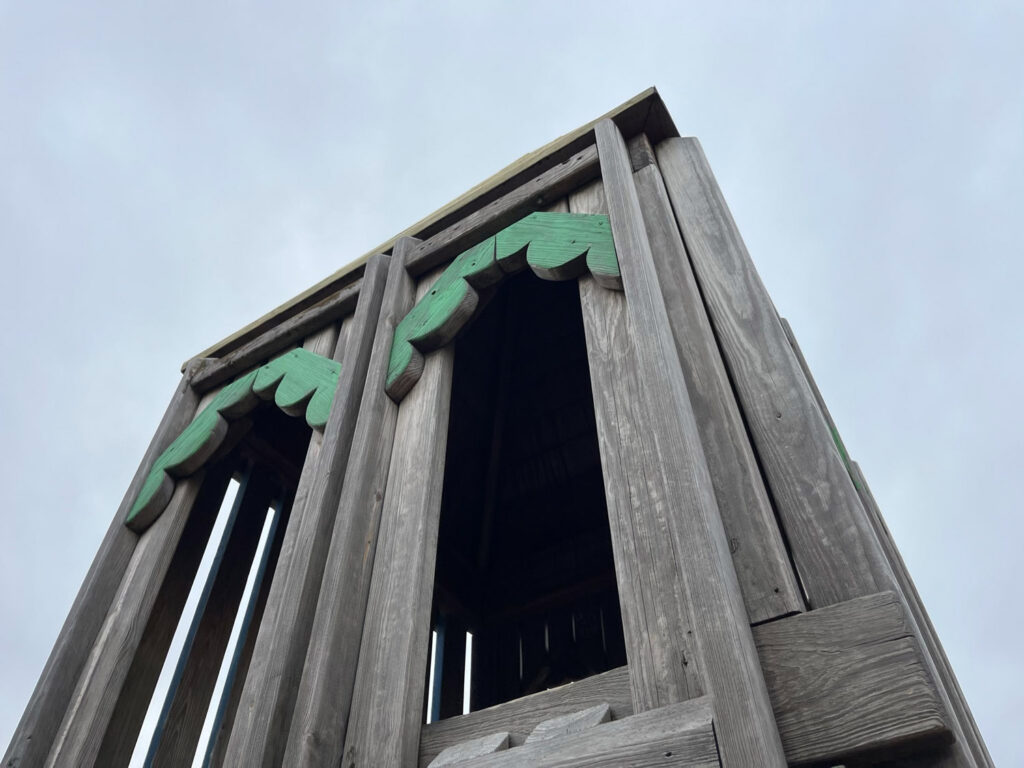
No one thinks letting your kid play at an open construction site or quarry is a good idea. But a somewhat perilous playground is the ideal place to practice running, jumping, and climbing. It’s far safer than helicopter parenting on plastic safe-scapes, only to release them unskilled into the real world.
Kids will fall. Tears will be had. Arm bones may break, though we hope not.
But the good news is, kids will develop physical skills and form amazing memories. This is proven—try it.
Remind someone of “those big wooden playgrounds from the ‘90s” and their face will light up. They will tell you stories. And they will probably say, “We should bring them back.”
Long live the wooden playground kingdom.
Faye Root is a writer and a homeschooling mother based in Northern Michigan. Follow her on X @littlebayschool.
